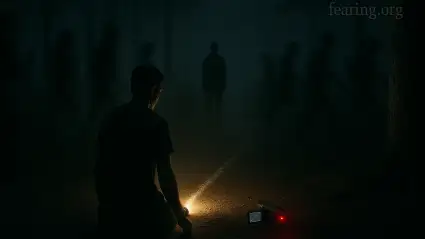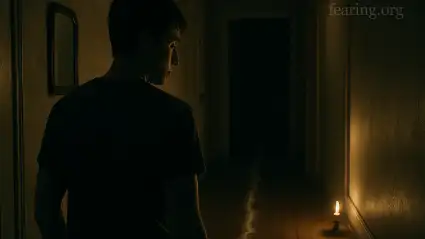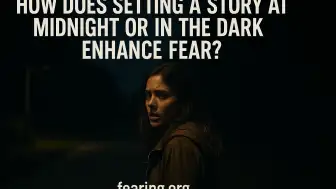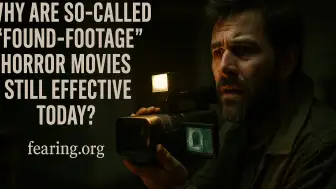Darkness in the wilderness feels different. It’s thicker, quieter, and far less forgiving than the kind you find in cities or movie theaters. When night falls and you’re miles from the nearest light, even the smallest sound — a snapping twig, a distant howl, the wind shifting through trees — can make your pulse quicken.
So how do you keep your mind steady when imagination begins to blur with fear? Whether you’re joining a horror-themed survival event, ghost tour, or simply camping in a remote area, mental preparation is the most powerful tool you have. It’s not about suppressing fear — it’s about understanding it, managing it, and transforming it into awareness.
1. Acknowledge Fear Before It Arrives
Pretending not to be scared only makes fear stronger when it surfaces. Instead, expect it. Before entering a dark forest or isolated location, remind yourself that fear is a normal, biological response to the unknown.
The wilderness triggers primitive instincts — we’re hardwired to fear what we can’t see. Acknowledging this removes the element of surprise. You can even say it out loud: “I will feel afraid, and that’s okay.”
By naming fear, you disarm it.
2. Ground Yourself in Reality
In horror-themed settings, imagination can spiral. Every rustle becomes a monster, every shadow a watcher. The antidote is grounding — bringing your senses back to the present moment.
Try this simple exercise:
Look: Identify five physical details in your surroundings (trees, stars, rocks, your breath in the cold air).
Listen: Pick out distinct sounds — wind direction, animal calls, distant movement.
Touch: Feel the ground under your boots, the texture of your jacket, your own pulse.
Grounding reminds your body that you’re not inside a movie; you’re in control, alive, and aware.
3. Know the Environment
Knowledge kills anxiety. Before entering the wilderness, learn the landscape. Study maps, wildlife habits, and potential hazards. Know where the nearest shelter, road, or water source is.
When you understand what’s really out there, your brain has less room to invent what isn’t.
It’s the unknown that scares us — familiarity erases its power.
Even horror storytellers rely on this psychology: they terrify us by slowly removing certainty. You can reverse that by building it back.
4. Control Breathing and Body Language
Fear begins in the body long before it reaches the mind. Rapid heartbeat, shallow breathing, muscle tension — all signal danger. But these can be reversed through conscious control.
Breathe slowly: Inhale for four seconds, hold for four, exhale for four.
Loosen your shoulders and hands: Tension tells your brain something’s wrong.
Stand tall: Confident posture sends feedback to the nervous system that you’re safe.
Fear feeds on helplessness. Physical composure rewires that loop.
5. Separate Fiction from Reality
In a horror-themed event or eerie hike, sensory details — darkness, strange sounds, flickering lights — are designed to unsettle you. Remember: they are triggers, not threats.
If you feel panic rising, anchor your thoughts:
“This is stimulation, not danger. My body is reacting, but I am in control.”
This cognitive reframing allows adrenaline to become excitement instead of terror. It’s the same technique professional actors and soldiers use under pressure.
6. Build Trust with Your Group
If you’re not alone, use the group as an emotional anchor. Fear fractures easily when shared. Stay in visual or vocal contact, establish simple check-ins, and use humor to defuse tension.
Laughter is a natural reset for the body — it releases endorphins that reduce fear hormones. Even a nervous joke can break a spiral of panic.
And if you’re leading a group, remember: calmness is contagious. Others will match your tone and breathing pace, consciously or not.
7. Prepare for Sensory Manipulation
Dark environments trick the brain. Your eyes may see shapes that aren’t there, and your ears might “fill in” sounds missing from silence. This is pareidolia — the mind’s tendency to create patterns out of chaos.
Recognize it when it happens: the shadow that moves, the voice that’s really wind, the flicker that’s just your headlamp shifting. Once you understand your brain’s behavior, the illusions become fascinating rather than terrifying.
8. Use Rituals of Safety
Even small rituals help reassert control. Lighting a lantern, saying a grounding phrase, or taking a steady drink of water can reset the nervous system.
Some investigators and campers use symbolic gestures — like drawing a circle of light around their tent with a flashlight or mentally “marking” a safe zone. These rituals work not through superstition, but psychology. They transform anxiety into purposeful action.
9. Manage the “Anticipation Zone”
The scariest moment isn’t when something happens — it’s when nothing happens. The stretch of silence between expectation and action creates a tension the body struggles to endure.
You can practice holding that tension. Try short meditations in quiet, dimly lit spaces to learn how your body reacts to stillness. The goal isn’t comfort — it’s awareness. When your heart starts to race, focus on your breath instead of the fear.
This trains your mind to endure suspense without panic — the very skill horror scenarios test.
10. Create a Safe Exit Strategy
Knowing you can leave at any moment gives your brain permission to relax. Before entering a horror-themed environment, plan your way out — literally and mentally.
Mark exits, keep a flashlight or compass within reach, and decide on a personal signal for “I need a break.” Knowing safety is always available keeps the experience thrilling, not overwhelming.
11. Reflect, Don’t Dismiss
After the experience, don’t brush it off with nervous laughter. Reflect on what triggered you, what calmed you, and what surprised you. Understanding your reactions transforms fear into insight.
That reflection builds resilience — the next time darkness surrounds you, your mind will recognize the pattern and adapt faster.
12. Turn Fear Into Curiosity
Ultimately, fear and curiosity are siblings. The same adrenaline that makes you want to run also sharpens your focus. If you learn to treat fear as information rather than threat, the wilderness becomes not a place of danger, but of discovery.
Ask yourself: What exactly am I feeling right now? Where does it sit in my body? What can it teach me about myself?
That’s how professionals — from explorers to paranormal investigators — endure fear: they study it, not surrender to it.
















